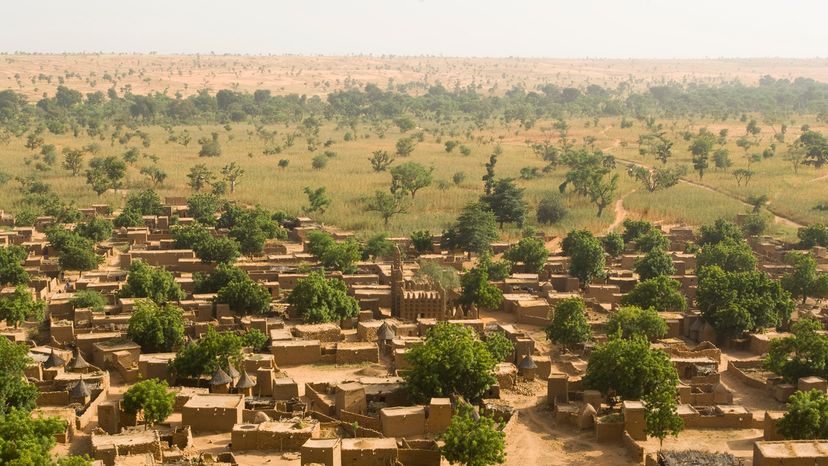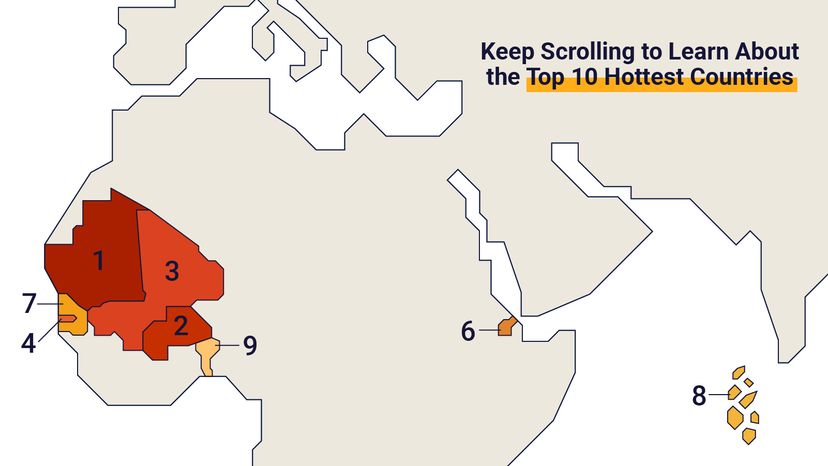
Did you know that some places on Earth can get so hot that local wildlife has evolved specifically to survive the extreme conditions? In these regions, the heat isn't just a summer wave; it's a constant presence.
This survival strategy is not a phenomenon isolated to the hottest country in the world, but a common trait among the flora and fauna in the most scorching environments on the planet.
Advertisement
There are many ways to measure the heat and average annual temperatures in these scorching-hot regions. But focusing on the mean surface air temperature — which averages daily highs and lows over a period to provide a consistent measure of warmth — offers a reliable way to compare the relentless heat affecting both deserts and rainforests.

| Country | Avg. Temperature (F) | Avg. Temperature (C) | |
| 1 | Burkina Faso | 84.7 | 29.3 |
| 2 | Mali | 84.6 | 29.2 |
| 3 | Senegal | 84.0 | 28.9 |
| 4 | Mauritania | 83.9 | 28.8 |
| 5 | Tuvalu | 83.5 | 28.6 |
| 6 | Djibouti | 83.3 | 28.5 |
| 7 | Gambia | 83.1 | 28.4 |
| 8 | Maldives | 82.6 | 28.1 |
| 9 | Benin | 82.4 | 28.0 |
| 10 | Palau | 82.2 | 27.9 |
Advertisement